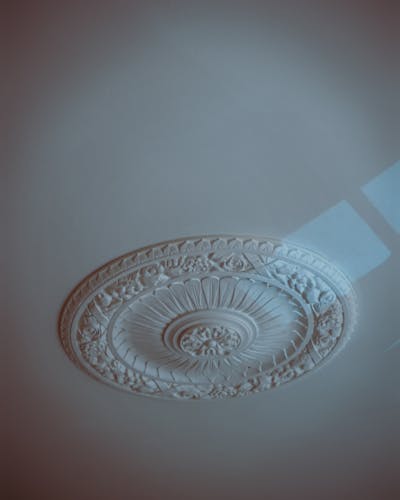Victorian plaster ceiling roses bring timeless elegance and intricate craftsmanship to any room. With over 1,000 hand-cast designs spanning five historical styles, they offer bespoke options for restoration and decoration. These ornate features not only highlight light fittings but also elevate interiors, blending tradition with refined artistry recognized worldwide. Discover how authentic ceiling roses create stunning focal points while preserving architectural character.
Essential guide to Victorian plaster ceiling roses: heritage, design, and sourcing
For period homes and design enthusiasts, Victorian Ceiling Roses are much more than decorative flourishes; they are keystones of authentic interior styling, celebrated for their intricate hand-cast patterns and impeccable period detail. Their presence transforms light fittings into ornate centrepieces, with designs spanning naturalistic motifs like acanthus leaves, sunflowers, and florals. The artistry behind these roses stems from generations of skilled craftsmanship, preserving traditional fibrous plaster methods for both grand and modest Victorian settings. The sharp definition and consistent quality of original patterns now inspire contemporary reproductions, offering options suitable for full restorations or subtle enhancements.
This might interest you : Can virtual reality simulations aid in training healthcare professionals for complex surgeries?
When sourcing high-quality plaster ceiling roses, buyers can explore specialist UK suppliers, online retailers, or bespoke makers offering authentic replicas and custom pieces. Specialist stores typically provide broad collections ranging in diameter and complexity accommodating diverse ceiling heights and room scales. Restoration experts can reproduce or repair antique pieces for listed or historic buildings, ensuring their continued legacy. Seek out suppliers who maintain detail, material quality, and period accuracy to create harmonious, period-correct interiors that respect the distinctive legacy of Victorian design.
Victorian ceiling rose designs, styles, and eras
Defining elements of Victorian ceiling rose designs and patterns
Victorian ceiling roses are recognized for their intricate motifs and strong decorative impact. The most common patterns draw on acanthus leaves, sunflowers, and interwoven floral elements. Each design features a raised profile and sharply defined ornamentation, resulting in a distinctive shadow play that adds depth to any ceiling. Many original Victorian ceiling rose patterns showcase bold central medallions surrounded by foliage or geometric scrollwork, crafted by hand to reflect the artistry of the era.
Also read : Travel charm: menefit and meaning
Comparison of ornate, classic, and subtle styles across property types
Homes from the Victorian period often matched ceiling rose style to room size and ceiling height. Larger rooms, such as parlours and dining spaces, favored extra-large, ornate roses with layered petals, scrolls, or multiple pieces for heightened drama. Smaller rooms made use of more subtle, yet still decorative, plain spun or minimalist floral designs. This variation allowed property owners to achieve both grandeur and restraint within the same home, reflecting both formal and informal living areas.
Distinguishing Victorian roses from Edwardian and Georgian alternatives
Victorian ceiling roses typically appear denser and more elaborate compared to their Edwardian and Georgian counterparts. Georgian styles prefer symmetry, shallower relief, and classical motifs, while Edwardian roses simplify ornamentation and introduce lighter, airier patterns. Victorian motifs remain the most visually impactful in terms of volume, texture, and period authenticity for restoration projects.
Sizing, materials, and practical installation for Victorian ceiling roses
Size selection: large and small options for different rooms
Choosing the right ceiling rose diameter is crucial for achieving balance and proportion in Victorian interiors. For grand living rooms and high ceilings, large ceiling rose designs—like options measuring 735mm or even up to 825mm provide an eye-catching centrepiece. In smaller rooms or hallways, compact styles ranging from around 65mm to 440mm lend subtle decoration without overpowering the space. Flat centre areas on many models make them adaptable for lighting fixture installation.
Material comparisons: plaster, polyurethane, polystyrene, and lightweight alternatives
Traditional plaster ceiling roses lead in authenticity and detailed craftsmanship, ideal for historic restorations. Polyurethane and polystyrene alternatives are valued for lightweight composition, making them easier and safer for DIY installation while maintaining a period look. Polyurethane resists cracking and accepts paint readily, while polystyrene is a budget-friendly choice suitable for those prioritising ease of handling and cost.
Practical installation guide: tools, adhesives, and fitting tips for Victorian homes
Proper installation begins with careful measurement and a dry-fit check. Plaster roses must be screwed into ceiling joists for security; lightweight versions often permit adhesive-only mounting. Essential tools include a spirit level, appropriate screws or specialist adhesive, and a sharp utility knife for trimming. For original or reclaimed Victorian roses, consider professional fitting services to protect the piece and ensure alignment with existing décor.
Restoration, maintenance, and integrating Victorian roses in modern interiors
Restoration and preservation of original Victorian ceiling roses
Restoring original Victorian plaster ceiling roses starts with careful cleaning to retain detail and avoid further deterioration. Precision is key: if plaster damage is present, gently strip loose material before filling gaps using compatible restoration plaster. For intricate or antique motifs, employing skilled artisans or specialists ensures accurate and respectful repair, especially for heritage properties. Restoration costs vary, usually depending on size, complexity, and the existing condition—significant if ornate features or multipiece roses are involved. Reclaimed Victorian ceiling roses may require additional reinforcement and matching to original fixings, and screws should always secure the rose to ceiling joists for safety and longevity.
Maintenance, cleaning, and repair advice
Regular maintenance keeps ceiling roses pristine. Dust gently with a soft brush and avoid moisture water may weaken plaster. For periodic deep cleaning, use a barely damp sponge for plain surfaces, but stick to dry methods for detailed carvings. If cracks or chips appear, prompt attention with fine filler can prevent escalation. Matching historic roses with period-accurate cornices or coving preserves design integrity seek guidance when combining decorative elements for a seamless look.
Modern applications: blending Victorian roses with contemporary décor and lighting
Subtle ceiling rose designs suit modern Victorian interiors by echoing vintage charm without overpowering current aesthetics. Explore large or small rose options to balance proportions in both spacious and intimate rooms. Integrating LED rings or minimalist pendants through the rose center modernizes illumination while highlighting the plasterwork. For harmony, coordinate finishes—white plaster remains classic, but muted greys or refined tones can offer contrast in updated designs. Opt for compatible light fitting solutions to maximize both function and visual appeal.











